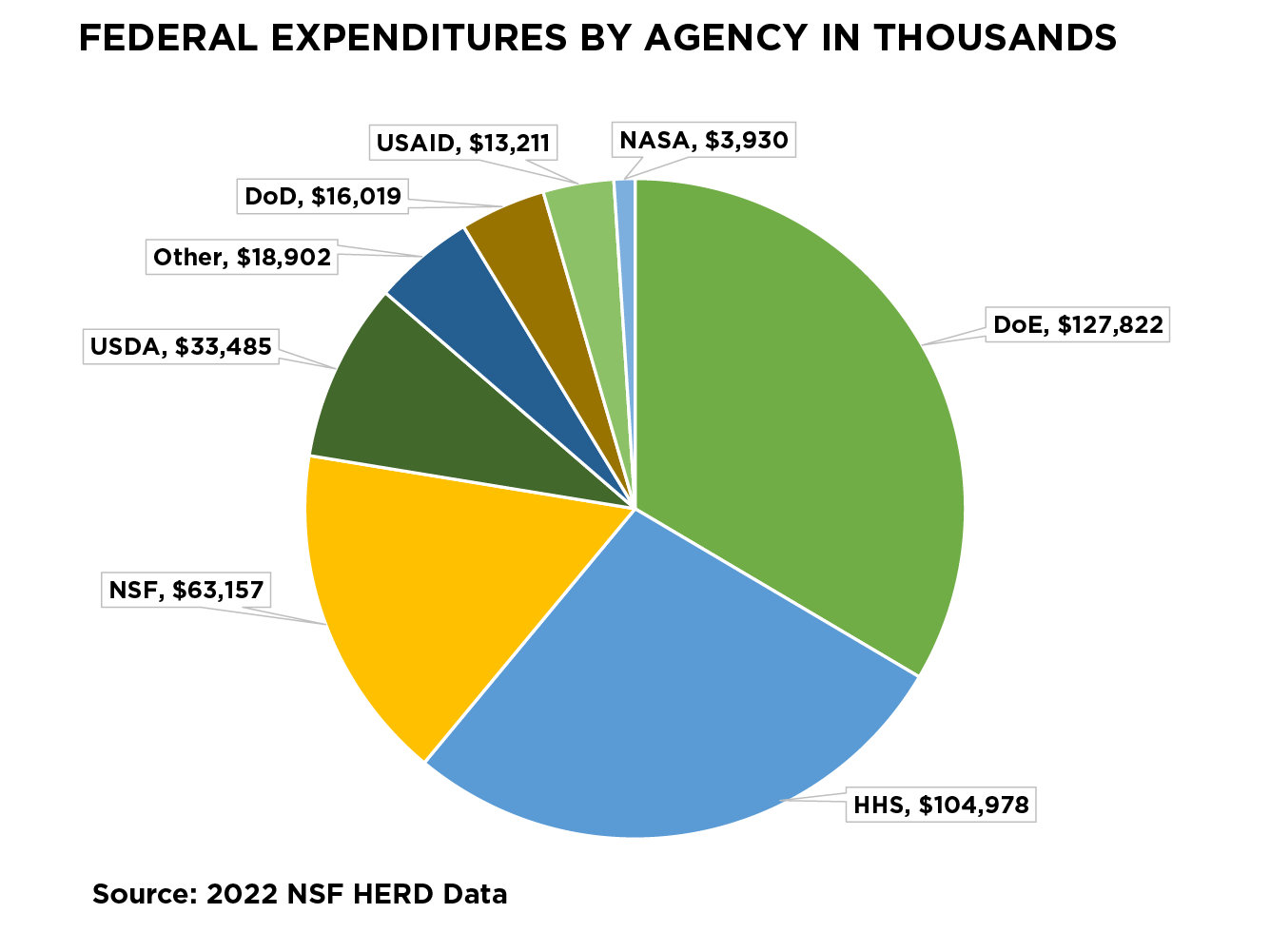Michigan State University has reached a milestone for research and development expenditures, with $759.2 million for fiscal year 2022. The total is a $49 million increase over 2021 and demonstrates strong progress toward the strategic plan goal of $1 billion in research expenditures by 2030. Growth was primarily in federally funded expenditures, up 9% to $381.5 million.
Research supported through the Department of Health and Human Services, which includes funding from the National Institutes of Health, was up 23.7% at $105 million. Expenditures from Department of Energy funding increased 17.8% to reach $127.8 million. Research expenditures funded by the Departments of Defense and Agriculture, or USDA, also increased by 8% and 4% respectively.
While the final data and rankings for 2022 will not be published for several months, MSU currently, based on FY 2021 data, ranks 39th in research expenditures out of more than 900 colleges and universities across the country who participate in the Higher Education Research and Development survey.
Research expenditures — that is, the funds spent to conduct research — are the most frequently cited and provide consistency for comparison with other institutions. The National Science Foundation surveys all recipients of federal funds annually, asking about their research expenditures from all funding sources.
“This increase is an important accomplishment we should all be very proud of, and it is thanks to the hard work of our research faculty, support staff and students that we were able to achieve it,” said Doug Gage, vice president for research and innovation. “The MSU research enterprise is growing and thriving, and I have every confidence that we will reach our long-term goals.”
A major contributor to growth in research expenditures is related to the MSU and U.S. Department of Energy-funded Facility for Rare Isotope Beams, or FRIB, which opened in spring 2022. Research in engineering, health sciences, agriculture, business, education, social science, and humanities also made strong gains.
"Michigan State has a global focus particularly around agriculture, education and health. The opening of international travel as we reached the endemic stage of COVID was very beneficial as several projects abroad had previously been on hold or operating at a limited capacity," added Gage.
MSU’s research portfolio has grown significantly over the past decade due in part to steadfast investments in areas of excellence such as plant and agricultural sciences and nuclear science, and strategic new investments in emerging areas including biomedical engineering and computation. These investments are showing a strong return in the talented faculty being recruited, more federal funding for the region and the development of a rich ecosystem of innovation that students can leverage in both their education and careers.
Almost every university in the top 50 has a major medical research complex, and in such cases, medical research expenditures can exceed all other research on campus combined. Rather than seeing this as a disadvantage, MSU has taken the approach of partnering with hospital systems around the state to make community-based health the priority. The university’s strong alliance with Henry Ford Health will further increase collaborative research and clinical opportunities while simultaneously increasing training opportunities for our health sciences students.
“Building and expanding partnerships is a key component of the MSU 2030 Strategic Plan and aligns perfectly with our land grant mission to transform lives,” Gage said. “This, together with our research expertise, positions us well to make significant contributions to society over the next decade and beyond.”
This story originally appeared on the Office of Research and Innovation website.
